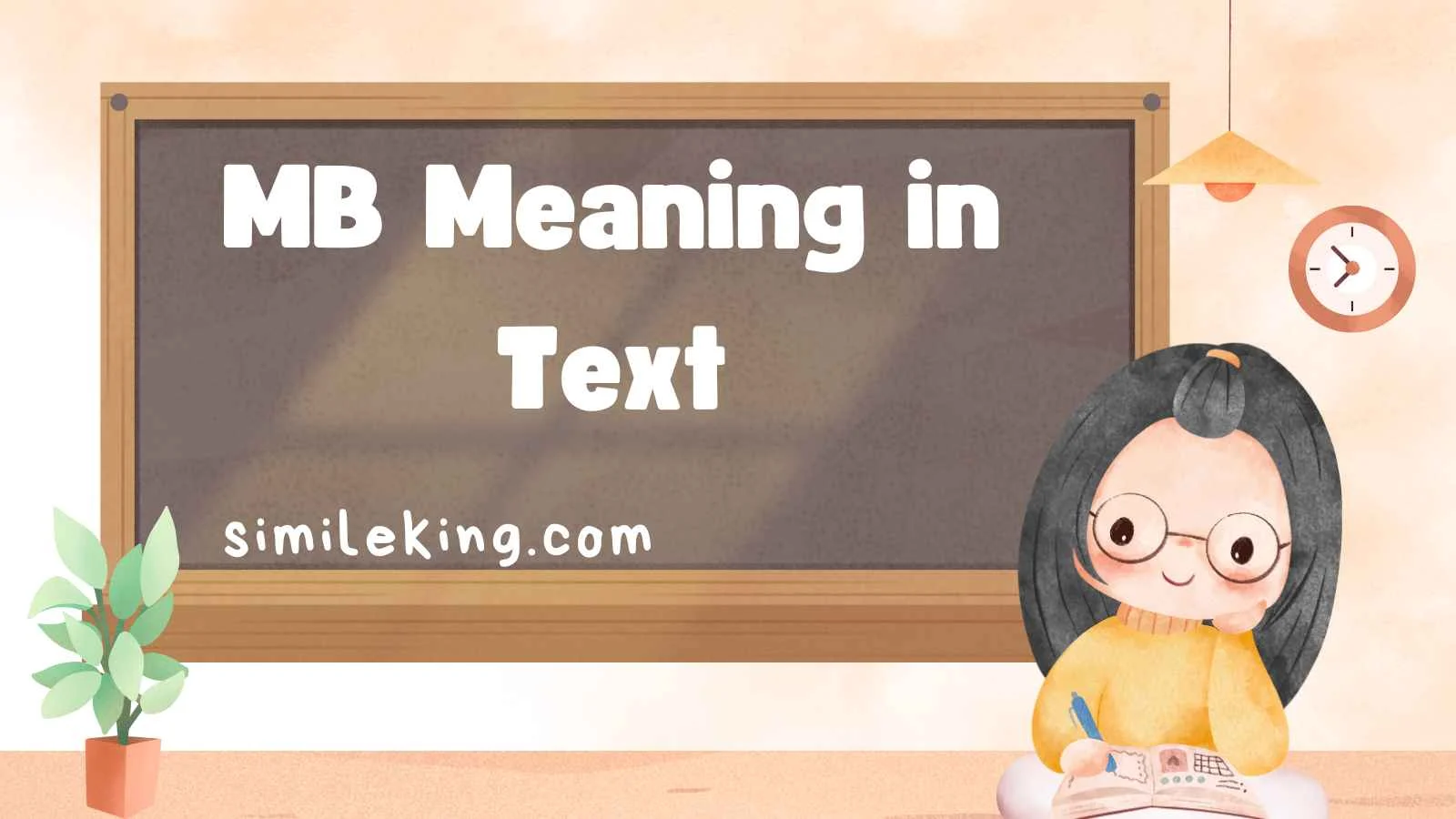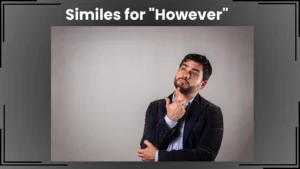In the fast-paced world of digital communication, abbreviations and short forms dominate the way we express ourselves. One of the most common yet often misunderstood shorthand expressions is “mb.” While at first glance it might seem like a technical term (megabyte, for example), in texting and casual online conversations, “mb” has a very different meaning.
In 2025, as communication trends continue to evolve, understanding what “mb” means in text is not just about decoding slang—it’s about mastering the subtleties of tone, context, and intent behind short, digital-friendly language. Whether you’re chatting with friends, messaging colleagues, or engaging in online communities, knowing how to use “mb” (and when not to) is essential.
This article provides the definitive guide to what “mb” means in text, how to interpret it across different situations, and the best alternatives to use in both casual and professional conversations. You’ll also see 10 refined examples to help you integrate it into your communication naturally.
What Does “MB” Mean in Text?
At its core, “mb” in text stands for “my bad.”
It’s a short, casual way of apologizing, admitting a mistake, or acknowledging that you were wrong. Instead of writing “Sorry, my bad,” people often just type “mb.”
Key Points to Note:
- Tone: Usually lighthearted, informal, and not overly serious.
- Purpose: Quick acknowledgment of fault or error.
- Context: Works best in casual chats, online gaming, group messages, or friendly exchanges.
Example:
- “Oh, I thought we were meeting at 8, not 7—mb!”
Here, “mb” softens the apology, making it sound less formal and more casual.
Why “MB” Became So Popular in Texting
The rise of abbreviations like “mb” reflects how digital communication values speed, efficiency, and relatability. Instead of typing long sentences, users want to convey meaning in just a few characters.
- Short & quick: Easy to type, especially on mobile.
- Casual tone: Feels friendly and less formal than “sorry.”
- Widespread acceptance: From online gaming chats to texting with friends, “mb” has become part of everyday digital slang.
- Generational influence: Younger generations prefer shorthand, while older generations often look it up when confused.
MB Beyond “My Bad”
While “my bad” is the most common meaning of “mb” in texting, it’s worth noting that abbreviations can have multiple interpretations depending on the context. Some secondary meanings of “mb” include:
- Maybe (less common, often used in casual chat): “Are you coming tonight?” — “mb.”
- Megabyte (technical context, not conversational): Used in IT, data storage, or computing discussions.
- Message back (used occasionally in older texting styles).
However, in 2025 texting culture, “mb” is overwhelmingly understood as “my bad.”
When to Use “MB” (And When Not To)
Like all shorthand, “mb” is context-sensitive. Using it in the wrong setting can make you seem careless or unprofessional.
✅ When It Works:
- With friends in casual conversations.
- In gaming chats when making a mistake.
- On social media replies to keep things light.
- In group texts where everyone uses slang.
❌ When It Doesn’t Work:
- In professional emails (always opt for “Apologies” or “I made an error”).
- In formal settings like academic or business reports.
- When the mistake is serious (a simple “mb” may seem dismissive).
Polite, Professional, and Casual Alternatives to “MB”
Depending on the tone you want to set, here are different ways you can replace “mb” in text. These alternatives ensure that your apology or acknowledgment is received in the right spirit.
1. Sorry about that (Polite & Neutral)
Works in almost any setting, casual or semi-professional.
- Example: “Sorry about that, I thought the file was already uploaded.”
2. Apologies (Formal & Professional)
Great for emails, workplace chats, or client interactions.
- Example: “Apologies for the oversight, I’ll send the updated version shortly.”
3. Oops, my mistake (Friendly & Casual)
Adds lightheartedness while still owning up.
- Example: “Oops, my mistake! I grabbed the wrong link.”
4. I take responsibility (Professional & Strong)
Best for formal contexts where accountability is important.
- Example: “I take responsibility for the confusion in the schedule.”
5. That’s on me (Casual but Responsible)
Balances informal tone with accountability.
- Example: “That’s on me, I should have double-checked.”
6. My apologies (Respectful & Formal)
Sounds polished without being too stiff.
- Example: “My apologies for missing your call earlier.”
7. Didn’t mean to (Casual & Soft)
Used when the mistake was unintentional but minor.
- Example: “Didn’t mean to step on your point, mb.”
8. My fault (Casual & Direct)
Close cousin of “my bad,” but slightly clearer.
- Example: “My fault—I should’ve sent that sooner.”
9. Forgive me (Polite & Warm)
Carries an emotional tone, often used in close relationships.
- Example: “Forgive me, I didn’t realize you were waiting.”
10. Overlooked that (Professional & Neutral)
Useful when the mistake was due to missing something.
- Example: “I overlooked that point in the report, I’ll fix it now.”
10 Texting Examples of “MB” in Action
Here are 10 user-friendly examples showing how “mb” appears in real conversations. These are designed to reflect modern 2025 texting styles:
- Friend 1: “You forgot to send the link.”
Friend 2: “Oh right, mb! Sending it now.” - Player 1: “You blocked me instead of the opponent.”
Player 2: “Haha mb, my aim was off.” - Colleague: “The file name doesn’t match the format.”
You: “Mb, I’ll rename it and resend.” - Friend: “Didn’t you say the movie was at 9?”
You: “Yeah, mb—it actually starts at 8:30.” - Sibling: “You ate the last slice?”
You: “Oops, mb! I didn’t realize it was yours.” - Teammate: “You left your mic on mute.”
You: “Mb, thanks for catching that.” - Friend: “You tagged the wrong person.”
You: “Oh wow, mb—I’ll fix it.” - Group Chat: “We’re meeting at the café, right?”
You: “Yes, mb for the confusion earlier.” - Classmate: “The deadline was today.”
You: “Wait, really? Mb—I thought it was tomorrow.” - Friend: “You sent the wrong photo.”
You: “Haha mb, that was meant for someone else.”
Nuances of Tone: Choosing the Right Alternative
The key to mastering “mb” is reading the tone of the conversation.
- In casual chats, “mb” is harmless and relatable.
- In semi-formal situations, a longer phrase like “sorry about that” is safer.
- In professional communication, avoid abbreviations altogether—choose polished language.
Think of it like this:
- “MB” = Jeans and sneakers (casual).
- “Sorry about that” = Business casual outfit (neutral).
- “Apologies” = Suit and tie (formal).
The Future of “MB” in 2025 and Beyond
Texting language is fluid and ever-changing. What’s trending today may fade tomorrow, but some shorthand sticks around because it fits a universal need.
“MB” continues to thrive in 2025 because:
- It’s quick to type.
- It’s universally understood by younger audiences.
- It carries a casual tone that matches digital culture.
We may even see it evolve into emoji form (such as 🤦 for “my bad”), but for now, “mb” remains a staple of online communication.
Final Thoughts
Understanding “mb meaning in text” is more than just decoding slang—it’s about grasping how tone, context, and culture shape digital conversations. While “mb” stands for “my bad” and works perfectly in casual situations, knowing when to switch to a more polished alternative can help you communicate more effectively across all contexts.
Whether you’re texting a friend, chatting in a game, or writing to a colleague, having a range of alternatives ensures that your message always lands the right way.





